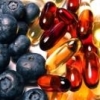




 2 votes
2 votes
May 2019 Longevity Review
longevity review supplements telomeres young blood rapamycin exosomes
Hello and welcome once again to this month’s longevity update. When I sat down to research & write this I feared that I would struggle to find material, as there had not been many major announcements in the popular mainstream science websites. However I should not have feared, as once I checked out Pubmed there was a wealth of new and important studies. These ranged from telomerase gene therapy to exosomes, via factors in aged blood and my favourite drug, Rapamycin. It is easy to fall into the trap of thinking that a lack of headlines indicates a lack of progress, yet below the surface; science continues its relentless advance, which will lead us eventually to longer, healthier and more youthful lives.
Follow me on Twitter @ChrisPollyanna1 for the latest updates.
Finally – please feel free to forward this email to anyone who might be interested, and please let me know if anyone would like to be included in my mailing list! ![]()
-------------------------------------------------------------------------------------------------------------------------------------
NOTE: I’ve been having trouble linking to the science journal hacking site sci-hub.tw, so am only including Full Text links to articles not behind a paywall. I have still been able to download most of them, so if there are any that you are after, I can send them upon request.
May Round-Up
- One line of attack against ageing not touched upon this year yet is the restoration of our telomeres, the protective caps at the end of our chromosomes which shorten with age. Previous studies have suggested health improvements with their elongation. The present study by the leader in the field continues this trend, this time looking at mental function:
- Another month, another factor found in blood, VCAM1, which increases with age and whose removal shows beneficial effects. Once again this is in relation to the brain:
- Unlike the study above, which looked at old blood, the one below looks at the beneficial effects of young plasma derived from blood, also in the brain, but this time after injury:
- A rather exciting study for me about my favourite anti-ageing drug Rapamycin, which shows that it slows down an epigenetic ageing clock - yet more proof that it affects one of the main ageing pathways. However the authors do explicitly warn not to extrapolate the results to humans – I’ve conveniently decided to ignore that!

- Yet another method to find anti-ageing drugs amongst existing approved drugs is unveiled here. Similar to last month, they discovered four drugs which extended worm lifespan by up to 30%. Interestingly lower doses were better than higher, which proved to be toxic. Unfortunately, they didn’t combine them with other drugs to see if there would be any synergistic effects.
- Cells have various methods to communicate with one another, one of which is the use of exosomes, small packets of proteins and other molecules which provide signaling information. It was recently found that that certain ones from younger animals can have anti-ageing effects. These two studies are further examples of that.
Human embryonic stem cell-derived exosomes promote pressure ulcer healing in aged mice by rejuvenating senescent endothelial cells. Full Text
-----------------------------------------------------------------------------------------------------------------------------------------
Videos to watch
The Buck Institute in California was the first institution devoted solely to the study of ageing when it opened its doors in 1999. It remains one of the premier institutes of its kind. This year, as part of celebrations to mark the 30th anniversary of the paper which kicked off the modern study of ageing, they launched a Webinar series, where they interviewed some of the leading lights of the field. Those watching live could also ask questions. Happily, all my questions were answered! The interviews with Judith Campisi and Steve Austad in particular are worth a watch:
https://buck.extendedsession.com/
------------------------------------------------------------------------------------------------------------------------------------------
Further sources of information:
Fight Aging!
Life Extension Advocacy Foundation (LEAF)
Longecity (good forums where the self-experimenters reside!)
Research Institutes:
SENS Research Foundation (I have a recurring monthly donation)
Buck Institute
Private initiatives:
Age-Reversal Network (good information & forums for those interested in self-experimentation – this is where I found how to get non-prescription Rapamycin)
Better Humans
Gerontology Research Group
Lifespan.io (Tied together with LEAF, I have a recurring monthly donation)
======================================================================================================================
May Supplemental Information
***Disclaimer 1 – As should be self-evident to anyone receiving these emails, I am NOT a doctor or indeed a scientist. All the information pertained within is for information purposes only; use at your own risk. Please consult with a healthcare practitioner if needing medical advice.***
**Disclaimer 2 – In no way should supplements be a replacement for an unhealthy diet or lifestyle. A varied, plant dominant dietary pattern is the cornerstone for health. Try to eat the rainbow – the greater the variety, the greater the benefit. Even though I might take a supplement derived from a plant source, I still eat the plant in question. Also, make sure you move as much as possible – that is what we evolved to do.**
*Also bear in mind that most of the studies mentioned below are in rodents, not humans. Rodents, needless to say, do not always react the same way to drugs as humans do – witness the countless times cancer or another disease has been cured in rodents only to subsequently fail human trials. I have *bolded any human trials.*
------------------------------------------------------------------------------------------------------------------------------
Lifestyle
Fasting/Dietary Restriction – certainly the cheapest & also one of the most effective anti-ageing interventions currently available. It comes in many flavours, but I fast for at least 12 hours every day.
*Early Time-Restricted Feeding Improves 24-Hour Glucose Levels and Affects Markers of the Circadian Clock, Aging, and Autophagy in Humans. Full text
Diet – let food be thy medicine…
*Eating blueberries every day improves heart health Full Text
*Coffee consumption and all-cause and cause-specific mortality: a meta-analysis by potential modifiers.
*High flavonoid cocoa supplement ameliorates plasma oxidative stress and inflammation levels while improving mobility and quality of life in older subjects: a double blind randomized clinical trial.
*The Efficacy of Cocoa Polyphenols in the Treatment of Mild Cognitive Impairment: A Retrospective Study Full Text
*The Association between Green and Black Tea Consumption on Successful Aging: A Combined Analysis of the ATTICA and MEDiterranean ISlands (MEDIS) Epidemiological Studies. Full text
Exercise – if you could bottle the benefits of exercise, it would be the biggest blockbuster drug of all time.
*Similar Effects of 24 Weeks of Resistance Training Performed with Different Frequencies on Muscle Strength, Muscle Mass, and Muscle Quality in Older Women. Full Text
Non-prescription Supplements (in alphabetical order)
Astaxanthin – which is behind the pink colour of salmon & shrimp. Considered the most powerful carotinoid, it has anti-oxidative, anti-inflamatory, anti-cancer, neuro-protective and skin-protective qualities. I take 4mg daily.
Astaxanthin exerts protective effects similar to bexarotene in Alzheimer's disease by modulating amyloid beta and cholesterol homeostasis in blood-brain barrier endothelial cells.
Leptin in hippocampus mediates benefits of mild exercise by an antioxidant on neurogenesis and memory.
Comparison of Carotenoids for Their Antifibrogenic Effects in Hepatic Stellate Cells.
Protective effects of astaxanthin on skin: Recent scientific evidence, possible mechanisms, and potential indications.
Heamatococcus pluvialis ameliorates bone loss in experimentally-induced osteoporosis in rats via the regulation of OPG/RANKL pathway.
Curcumin – the spice which gives curries their yellow colour. Anti-inflammatory and neuroprotective. I take 1 gram a day. Needs to be taken with black pepper (piperine) to improve bio-availability.
*Curcumin in Autoimmune and Rheumatic Diseases. Full Text
*The effect of curcumin supplementation on anthropometric indices, insulin resistance and oxidative stress in patients with type 2 diabetes: a randomized, double-blind clinical trial. Full Text
*The effect of curcumin with piperine supplementation on pro-oxidant and antioxidant balance in patients with non-alcoholic fatty liver disease: a randomized, double-blind, placebo-controlled trial.
*Oral turmeric/curcumin effects on inflammatory markers in chronic inflammatory diseases: A systematic review and meta-analysis of randomized controlled trials.
Chemopreventive efficacy of oral curcumin: a prodrug hypothesis.
Natural Dietary Supplementation of Curcumin Protects Mice Brains against Ethanol-Induced Oxidative Stress-Mediated Neurodegeneration and Memory Impairment via Nrf2/TLR4/RAGE Signaling. Full Text
Fisetin – a flavonoid found in highest concentration in strawberries. Senolytic, anti-inflammatory, anti-cancer, neuro-protective & Sirt1 activator. I take 100mg daily.
Fisetin and Quercetin: Promising Flavonoids with Chemopreventive Potential. Full Text
Fisetin supplementation prevents high fat diet-induced diabetic nephropathy by repressing insulin resistance and RIP3-regulated inflammation.
Endoplasmic reticulum stress-induced iRhom2 up-regulation promotes macrophage-regulated cardiac inflammation and lipid deposition in high fat diet (HFD)-challenged mice.
Nicotinamide MonoNucleotide (NMN) – newer NAD+ precursor. I take 250mg daily.
Implications of altered NAD metabolism in metabolic disorders. Full Text
Nicotinamide mononucleotide (NMN) treatment attenuates oxidative stress and rescues angiogenic capacity in aged cerebromicrovascular endothelial cells: a potential mechanism for the prevention of vascular cognitive impairment.
Sirt1 counteracts decrease in membrane phospholipid unsaturation and diastolic dysfunction during saturated fatty acid overload.
Nicotinamide Riboside (NR) – NAD+ precursor.
Pterostilbene – found in blueberries. Anti-oxidant, anti-inflamatory and Sir1 activator. Similar to, but with greater bioavailability than resveratrol. Just started taking 50mg again daily. Works better in conjunction with NAD+ precursors.
Pterostilbene Ameliorates Nephropathy Injury in Streptozotocin-Induced Diabetic Rats.
Pterostilbene Activates the Nrf2-Dependent Antioxidant Response to Ameliorate Arsenic-Induced Intracellular Damage and Apoptosis in Human Keratinocytes. Full Text
Resveratrol – found in the skin of grapes. Anti-oxidant, anti-inflamatory and Sir1 activator. Just started taking 250mg a day. Works better in conjunction
with NAD+ precursors & Spermidine.
Grape Peel Extract and Resveratrol Inhibit Wrinkle Formation in Mice Model Through Activation of Nrf2/HO-1 Signaling Pathway.
Effects of resveratrol supplementation in male Wistar rats undergoing an endurance exercise and acute exercise training.
Effect of resveratrol on metabolic syndrome components: A systematic review and meta-analysis.
The Effects of Dietary Supplements That Overactivate the Nrf2/ARE System.
Exploration of age-related mitochondrial dysfunction and the anti-aging effects of resveratrol in zebrafish retina. Full Text
Spermidine – found in wheat germ and a potent inducer of autophagy, it works in synergy with Resveratrol. I try to eat a couple of tablespoons of wheat germ every day.
*Endothelial Function is improved by Inducing Microbial Polyamine Production in the Gut: A Randomized Placebo-Controlled Trial. Full Text
Spermidine-enhanced autophagic flux improves cardiac dysfunction following myocardial infarction by targeting AMPK/mTOR signaling pathway.
Prescription Supplements
Rapamycin – first drug proven to increase the health & lifespan of mice. Currently used for organ transplantation and against cancer. Have taken four doses of 2.5mg, four at 3.75mg and will be moving to 5mg once my surgical wounds have closed up (it delays wound healing). The last two articles here actually show some potential negative side effects – something I’m not going to shy away from disclosing to you!
Rapamycin attenuates articular cartilage degeneration by inhibiting β-catenin in a murine model of osteoarthritis.
Rapamycin modulates tissue aging and lifespan independently of the gut microbiota in Drosophila Full Text
Rapamycin and Alzheimer disease: a double-edged sword?
Inhibition of mTOR by Rapamycin Aggravates Corneal Epithelial Stem Cell Deficiency by Upregulating Inflammatory Response.
Alteration of the Wnt/GSK3β/β catenin signalling pathway by rapamycin ameliorates pathology in an Alzheimer's disease model.
Mammalian Target of Rapamycin: Is It Relevant to COPD Pathogenesis or Treatment?
Do drugs that target mTOR generate CCN2-mediated fibrogenic side effects?
Senolytics – not supplements or available now, but the most exciting area of anti-research at the moment. I intend to take the plunge into senolytics within the next year, before giving them to my parents:
Senescent Cells and Cataract Development Full Text
Regulation of Survival Networks in Senescent Cells: From Mechanisms to Interventions. Full text
Senescent cell clearance by the immune system: Emerging therapeutic opportunities.
Acceleration of β Cell Aging Determines Diabetes and Senolysis Improves Disease Outcomes
Restored immune cell functions upon clearance of senescence in the irradiated splenic environment
Interacting NAD+ and Cell Senescence pathways complicate anti-aging therapies.
Attached Files
-
 May Supplemental Information.doc (74KB)
May Supplemental Information.doc (74KB)
downloads: 207











































